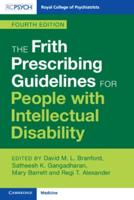Publisher's Synopsis
When the great English physiologist Charles Sherrington spoke with awe of ``mind that goes more ghostly than a ghost,'' he was reflecting the wonder that people have always felt about the brain, their most powerful, yet least tangible, attribute. For the greater part of this century, psychologists and psychiatrists have addressed the problem introspectively. Even with the increasing rigor and objectivity of contemporary neurobiological methods, the brain remains relatively inaccessible, at least as far as mental phenomena are concerned.
This volume is one of the first to address itself exclusively to putative biological substrates of higher cognitive functioning. It provides the reader with an overview of the biological approaches, both under development and in use, to study mental operations. Among the research avenues presented are:
* Cytoarchitectonics
* Quantitative neurohistology
* Positron emission tomography
* Magnetoelectroencephalography
* A spectrum of macro- and microphysiological recording
* Techniques in the wakeful and behaving human and primate
* A sampling of psychological and psychophysiological approaches
that focus on specific aspects of higher cognitive activities.
This volume is one of the first to address itself exclusively to putative biological substrates of higher cognitive functioning. It provides the reader with an overview of the biological approaches, both under development and in use, to study mental operations. Among the research avenues presented are:
* Cytoarchitectonics
* Quantitative neurohistology
* Positron emission tomography
* Magnetoelectroencephalography
* A spectrum of macro- and microphysiological recording
* Techniques in the wakeful and behaving human and primate
* A sampling of psychological and psychophysiological approaches
that focus on specific aspects of higher cognitive activities.









